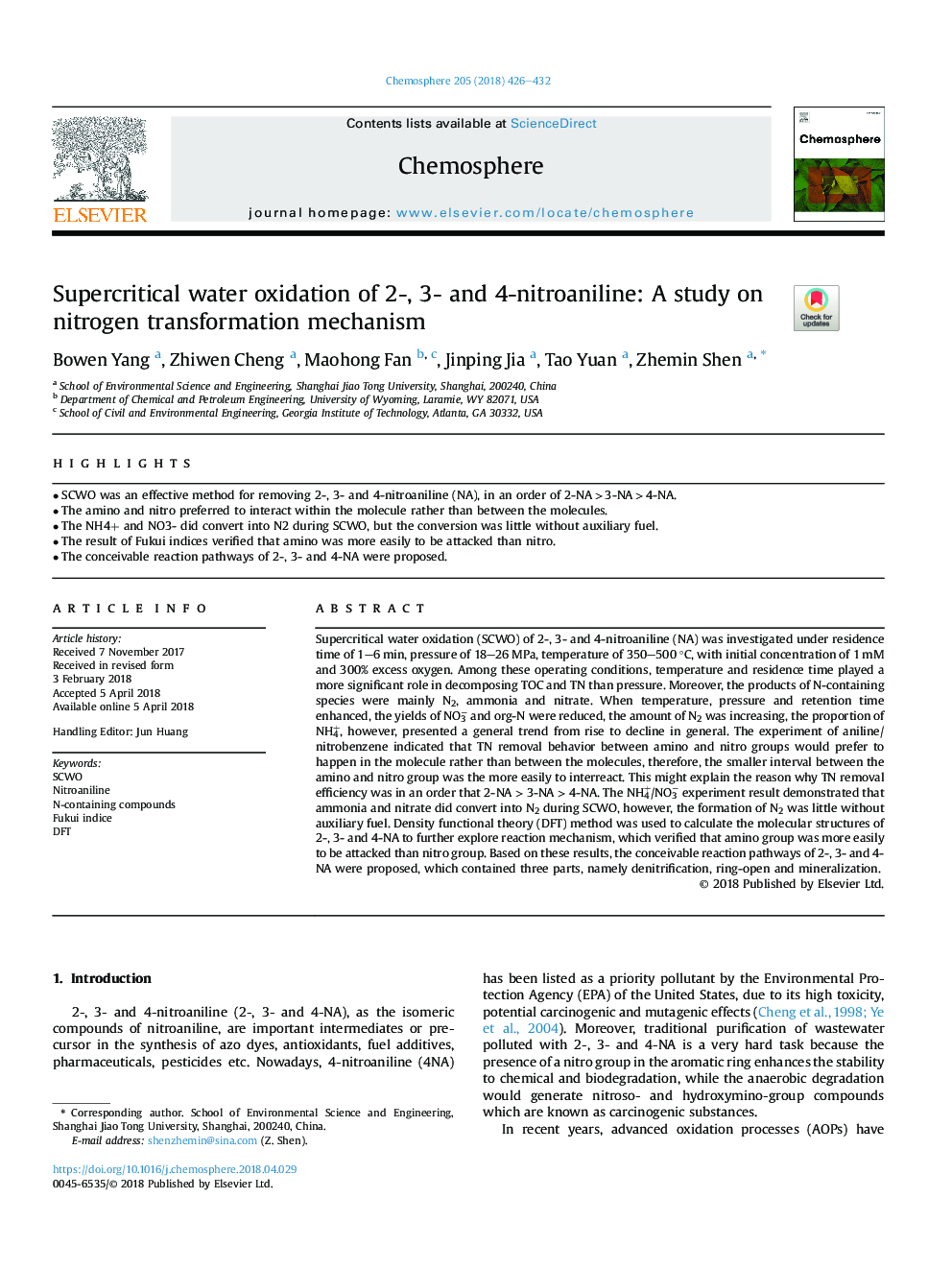| Article ID | Journal | Published Year | Pages | File Type |
|---|---|---|---|---|
| 8851056 | Chemosphere | 2018 | 7 Pages |
Abstract
Supercritical water oxidation (SCWO) of 2-, 3- and 4-nitroaniline (NA) was investigated under residence time of 1-6â¯min, pressure of 18-26â¯MPa, temperature of 350-500â¯Â°C, with initial concentration of 1â¯mM and 300% excess oxygen. Among these operating conditions, temperature and residence time played a more significant role in decomposing TOC and TN than pressure. Moreover, the products of N-containing species were mainly N2, ammonia and nitrate. When temperature, pressure and retention time enhanced, the yields of NO3â and org-N were reduced, the amount of N2 was increasing, the proportion of NH4+, however, presented a general trend from rise to decline in general. The experiment of aniline/nitrobenzene indicated that TN removal behavior between amino and nitro groups would prefer to happen in the molecule rather than between the molecules, therefore, the smaller interval between the amino and nitro group was the more easily to interreact. This might explain the reason why TN removal efficiency was in an order that 2-NA > 3-NA > 4-NA. The NH4+/NO3â experiment result demonstrated that ammonia and nitrate did convert into N2 during SCWO, however, the formation of N2 was little without auxiliary fuel. Density functional theory (DFT) method was used to calculate the molecular structures of 2-, 3- and 4-NA to further explore reaction mechanism, which verified that amino group was more easily to be attacked than nitro group. Based on these results, the conceivable reaction pathways of 2-, 3- and 4-NA were proposed, which contained three parts, namely denitrification, ring-open and mineralization.
Related Topics
Life Sciences
Environmental Science
Environmental Chemistry
Authors
Bowen Yang, Zhiwen Cheng, Maohong Fan, Jinping Jia, Tao Yuan, Zhemin Shen,
